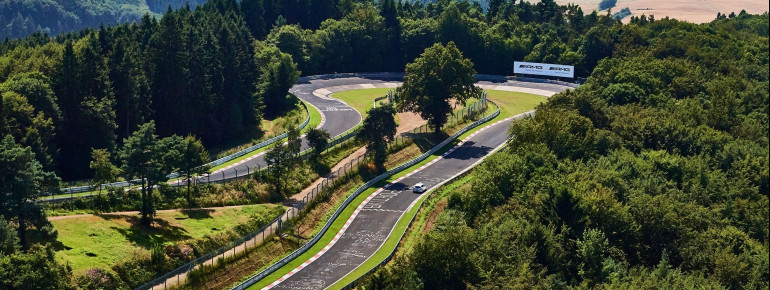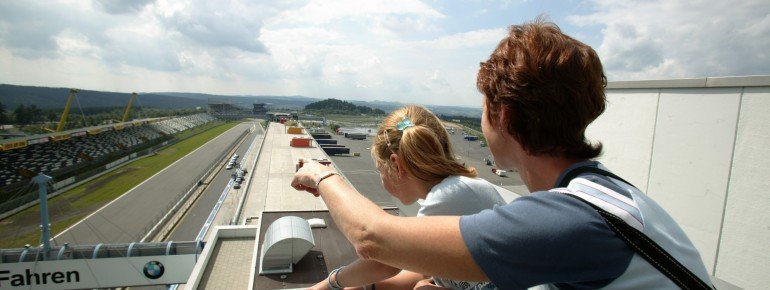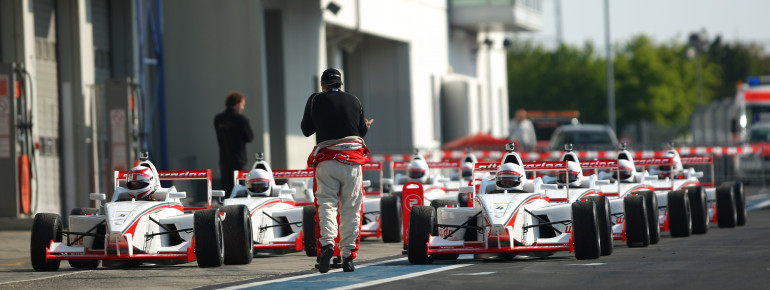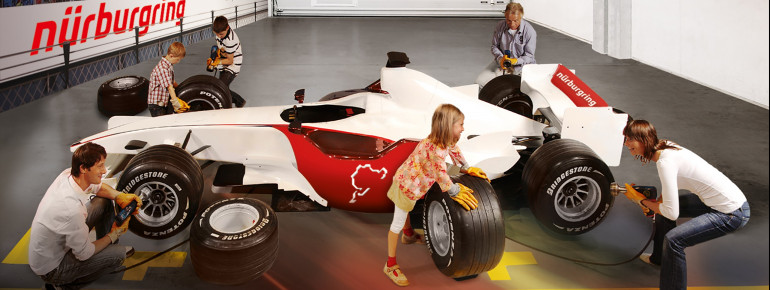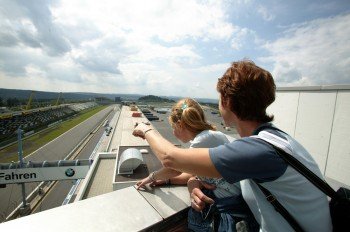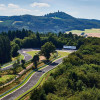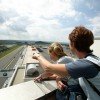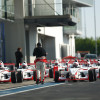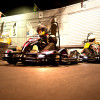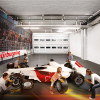Contents
Description
The historic circuit
The legendary Nürburgring is located in the Eifel between Adenau and Mayen. The tradition-steeped motorsport circuit is one of the most difficult Grand Prix tracks and features extreme uphill and downhill gradients with differences in altitude of up to 300 metres.
Of the original 28-kilometre track, only the legendary Nordschleife remains today. This is connected to the current 4.5-kilometre-long newly built track. The circuit is named after the nearby Nürburg Castle and the local community of the same name.
Motor sport series as guests
Every year, the Nürburgring event calendar is full of highlights. In addition to the annual ADAC Zurich 24h Race and the ADAC Truck Grand Prix, international racing series such as the FIA WEC are also part of the program. From the Drift Cup to the Endurance Cup, every fan gets his money's worth here.
In 2009, a leisure centre with a roller coaster, shopping centre, holiday village, and hotel complex was opened around the Nürburgring as part of the "Nürburgring 2009" project.
Festivals at Nürburgring
In addition to the motorsport series, three festivals take place at the Nürburgring, showing that the Nürburgring is more than "just" a race track. With Rock am Ring, the multi-day festival returns to its founding site and attracts over 80,000 visitors to the Eifel. Schlager and EDM (Electronic Dance Music) fans also get their money's worth. With the three-day party festival "Nürburgring Olé", the well-known "Olé Party" comes to the Nürburgring. In addition, the EDM festival "New Horizons" will transform the racetrack and all associated event areas into a futuristic landscape and creates a new definition of dance festivals.
Historical Information
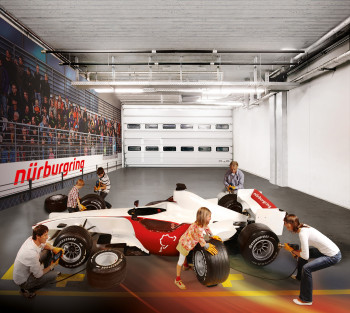
German motor sport
With the beginning of the 20th century, motor sports became more and more popular worldwide. Successes abroad and the financial attractiveness were decisive factors for thinking about a race track in Germany as well. Since country roads were too dangerous for the population as high-speed routes, Kaiser Wilhelm II ordered a design for a race track.
Kaiser Wilhelm II had a design drawn up for a Grand Prix track. The Eifel was chosen as a suitable location, as the existing natural features such as plateaus, valleys, inclines and declines were ideal for an exciting motor racing circuit. However, the population lost interest in racing as early as 1907, so the plan was scrapped.
After the end of the First World War, the beginning of motorisation led to a rebirth of motorsport fever. Newly founded automobile clubs promoted the trend and so the unfinished concept from 1907 was taken up again. Once again, the Eifel was chosen as the location because of its natural conditions. The region was also considered structurally weak. It was hoped that the construction of the line would bring about an economic and infrastructural upswing.
Before the final decision to build was made, various municipal and district members met and talked about the plan for a race track of their own. Hans Weidenbrück, the tenant of the community hunt, was commissioned to present the construction plans to a large automobile club in Cologne. After this discussion, Weidenbrück founded his own automobile club, which was only concerned with the construction of the race track. Hans Weidenbrück is therefore also referred to as the "Father of the Nürburgring". The chairman of his founded association was Otto Creutz, the then district administrator of the district of Adenau.
Construction and inauguration
Creutz began the construction design of the high-speed track shortly afterwards. According to him, the race track was to run around the Nürburg. Furthermore, no connection to road traffic was planned, but at the same time the track was to be usable as a test track. For this, a European "country road character" was desired, which included long stretches of track as well as winding inclines. With the concept developed, Creutz went to the Reich Ministry in April 1925 and presented his plans there. He argued with the economically weak situation and the expected boom. The decision was made to build and 2.5 million Reichsmarks were budgeted for the project.
On 1 July 1925, work began on the new line, which was planned to have a total length of 28.3 kilometres. The longest part was to be the Nordschleife with 22.8 kilometres. The width of the road was eight metres and the gradient eleven percent. The gradient was calculated at 17 per cent. In addition, a start and finish house as well as a pit lane for up to 50 teams were to be built. In September of the same year, the official laying of the foundation stone of the Nürburgring took place. Less than a year later, the first races could take place on sections that had already been completed.
Opening and renewed reconstruction work
The track was opened in 1927. The premiere took place on 18 June 1927 with an Eifel race for motorbikes. Since the opening, the track can also be used by everyone for a fee.
In 1928, the first driver had a fatal accident during a race. And he was not to be the last. Due to the increasingly faster sports cars, the narrow track became more and more dangerous for the drivers. Some Grand Prix races were moved to the Hockenheimring because the Formula 1 drivers refused to race in the Eifel because of the danger.
After reconstruction work on the Nordschleife, Formula 1 returned to the Nürburgring for the first time in 1970/71. However, drivers and teams were still not satisfied because, for example, the ambulances took too long to reach an accident. Due to the geographical conditions, however, the track could not be widened, as this would have triggered earth tremors. Therefore, the last Formula 1 race took place at the Nürburgring in August 1976.
After other international racing series threatened to leave, the traditional circuit was changed again. Only the start and finish of the original circuit were integrated into the new 4.5-kilometre Grand Prix track. Together with the Nordschleife, the total length of both sections is 26 kilometres, which are individually adapted for the individual races. The South Loop has been open to public traffic since the reconstruction.
Interesting facts
- The day pass at Nürburgring is €30 making it one of the 5 cheapest tourist Attractions in the Rhineland-Palatinate.
How to get there
By car
Driving on the A61, leave the motorway at the Wehr exit. Follow the B412 and turn off at Herresbach onto the B258 towards Nürburg. The route of the main road leads to the Nürburgring.

